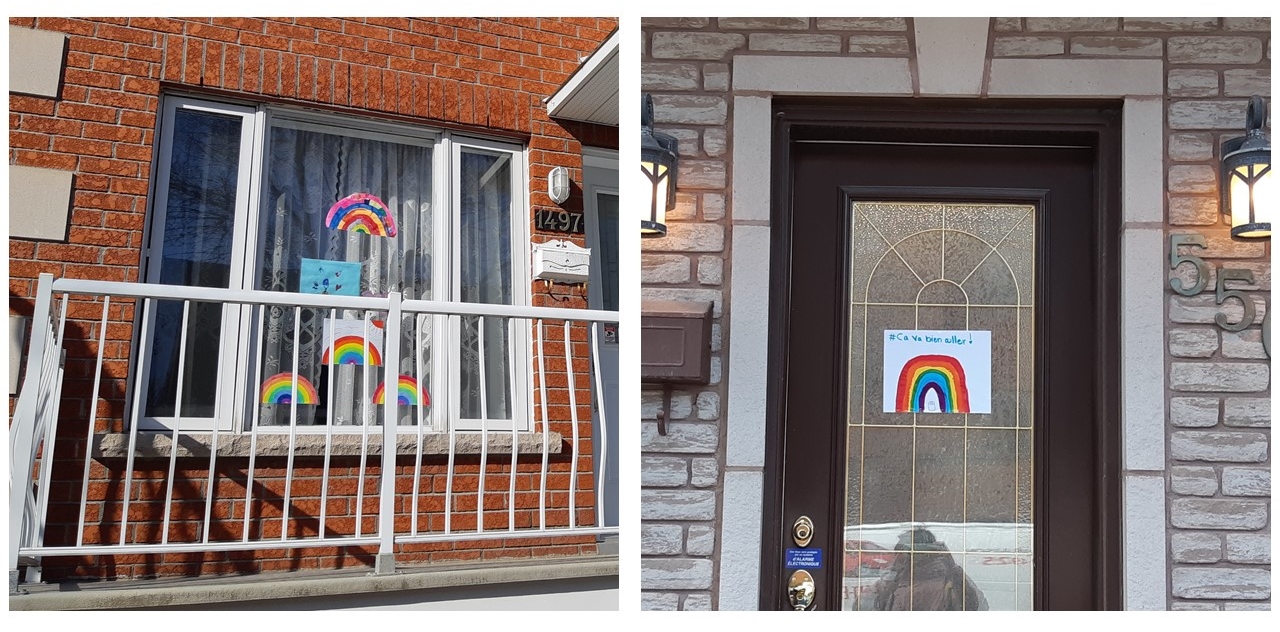Since Montrealers started to self-isolate due to COVID-19, colourful rainbows have been appearing on their homes’ windows.
The rainbows are sometimes paired with the sentence “ça va bien aller” (it’s going to be okay). Both represent hope and optimism; a way for people to remind themselves and others that social distancing is only temporary.
Samanta Robin Dupuis and her children, residents of Ville-Émard-Côte-Saint-Paul, are some of the people who have painted rainbows and placed them on their windows.
It’s to show support to families around the world, that it’s going to be okay,” said Robin Dupuis, adding that getting crafty uplifted the family’s mood.
The mother of six says her kids enjoy their daily 15-minute walks around the neighbourhood, looking for rainbows.
“We go for a walk every day and it gives kids something fun to look for,” said Jenny Ireland, another Ville Émard resident. Her family rainbowed-up to be a part of the community and the rainbow chase.
In the community, some local businesses like the coffee shop Yo&Co Espresso Bar on Laurendeau Street have also joined the rainbow movement. Yorick Caron, co-owner of the coffee shop said a client and her four-year-old daughter gave him the rainbow drawing that’s on the front window.
“We’re all stuck at home, we’re all struggling,” he said. “With the rainbow, we’re reminded to think ahead, that brighter days will come.”
On social media, the hashtags #çavabienaller and #itsgoingtobeokay paired with the rainbow imagery, are buzzing.
On March 22, Quebec City-based graphic designer Karine Perreault created a Facebook profile frame featuring a rainbow and the slogan “ça va bien aller.” Samanta Robin Dupuis, the mother of six, uses it on her social media profile.
“Rainbows appear after a storm. They always come at the right time to tell us to see life in colours,” Perreault told The Concordian.
Perreault’s frame went viral and is among Facebook’s current top ones.
“I’m happy it makes people feel good and it gives hope,” she said.
Imagery from the movement has even appeared in Quebec Premier François Legault’s recent Twitter posts.
And, on March 24, the Montreal Pierre-Elliott Trudeau International Airport announced on Twitter the imagery now fills the letter O of ‘Montreal’ on the airport’s classic signage.
The hashtag, the rainbow movement and its optimistic symbolism originate from Italy, where people in isolation have used them to support each other and share positive thoughts.
Photo by Lucie Laumonier
